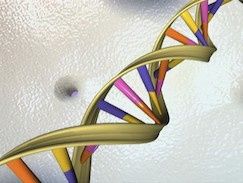
Researchers at the University of California, San Francisco, and scientists at Mammoth Biosciences have laid out a method for using CRISPR to quickly locate the coronavirus on Thursday.
Jennifer Doudna, a CRISPR pioneer, published their research about the method they used using samples from nose or throat swabs in Nature Biotechnology.
The test they made takes about 40 minutes to yield results, compared with four to six hours for traditional polymerase chain reaction-based COVID-19 tests currently being used.
However, the test also appears to likely produce false-negatives a bit more often than the existing coronavirus tests. This causes a lot of clinicians to doubt the capability of these tests, warning that it could give of misleading results.
What is CRISPR?
For the extended version, CRISPR stands for clustered regularly interspaced short palindromic repeats. It is a family of DNA sequences found in the genomes of prokaryotic organisms like bacteria and archaea.
To make things simpler, we're talking about a robust new mechanism to control which genes get expressed in animals, plants, and even humans. It is the ability to 'edit' genetic traits and customize them with more precision than ever before.
Although proving to be comparably simple and powerful, a big concern with CRISPR is that it is not perfect. Researchers found out that the advancement of editing genes can cause massive wipeouts and numerous deaths that could endanger human health.
That follows recent studies showing that CRISPR-edited cells can unintentionally trigger cancer. For this reason, many scientists argue that experiments in humans are premature and that the risks around CRISPR modification are incredibly high.
The CRISPR-based Coronavirus Test
Robert Garry, a professor of virology at Tulane University, says he sees potential in the technology and that he's in favour of it. He adds that others might have 'oversold it a bit', with regards to the test's accuracy and convenience.
The researchers previously published a paper about their work on a preprint server and with a smaller group of patients. The new study marks CRISPR's entrance into the peer-reviewed literature as a coronavirus testing agent. It also represents the largest manifestation of its ability in real patients.
Similar to the existing coronavirus tests of today, the new CRISPR-based test requires a provider to swab deep in the back of the nose and throat of patients suspected to have coronavirus. Once the samples are isolated and secured, CRISPR is then used.
Using a protein called Cas-12, along with pieces of viral genetic material used to guide it, CRISPR focuses on two coronavirus genes in the sample: the coronavirus N gene and the E gene. The N gene is what the tests by the Centers for Disease Control and Prevention aim to detect, while the E gene in the coronavirus is what the tests from the World Health Organisation target on spotting.
Once the genes are found, the tool starts cutting, causing a reaction which changes the colour on the dipstick, somewhat similar to how a pregnancy test works. The process is said to be faster and less resource-intensive than traditional PCR-based tests, which require complicated equipment and hours of labour.
One advantage of a CRISPR-based test over a traditional PCR-based test is that it could be run several times on the same sample. This increases the chance of indicating that a negative test truly means a patient does not have the virus.
Researchers at competitor institution, Sherlock Biosciences, are also working on rapid, CRISPR-based coronavirus tests. At the end of February, Sherlock announced a partnership with Silicon Valley-based testing company Cepheid on a proof-of-concept test.
Also Read: Nippon Paint Designs Virus-Killer Paint to Protect Healthcare Workers From COVID-19












